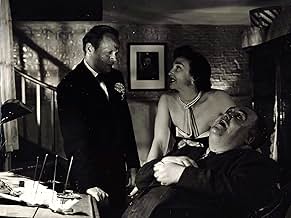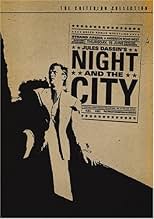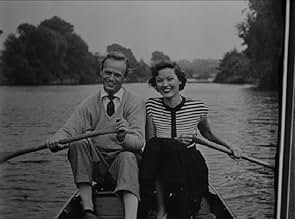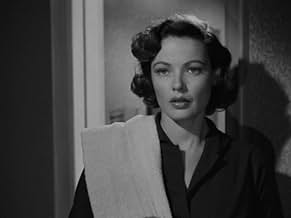CALIFICACIÓN DE IMDb
7.9/10
16 k
TU CALIFICACIÓN
Un estafador de poca monta y un vendedor de clubes nocturnos se aprovecha de algunas circunstancias fortuitas y trata de convertirse en un gran jugador como promotor de lucha libre.Un estafador de poca monta y un vendedor de clubes nocturnos se aprovecha de algunas circunstancias fortuitas y trata de convertirse en un gran jugador como promotor de lucha libre.Un estafador de poca monta y un vendedor de clubes nocturnos se aprovecha de algunas circunstancias fortuitas y trata de convertirse en un gran jugador como promotor de lucha libre.
Ken Richmond
- Nikolas of Athens
- (as Ken. Richmond)
Paul Beradi
- Diner
- (sin créditos)
Derek Blomfield
- Young Policeman
- (sin créditos)
Clifford Buckton
- Policeman
- (sin créditos)
Ernest Butcher
- Bert
- (sin créditos)
Peter Butterworth
- Thug
- (sin créditos)
Naomi Chance
- Nightclub Hostess
- (sin créditos)
Edward Chapman
- Hoskins
- (sin créditos)
Argumento
¿Sabías que…?
- TriviaDirector Jules Dassin made the film while in the process of being blacklisted. Fox studio chief Darryl F. Zanuck told him it could possibly be the last film he'd ever direct, so he should shoot the most expensive scenes first so the studio wouldn't be able to blacklist him until it was completed.
- ErroresAs Harry is being chased through the streets of London at night, he runs down a set of stairs, then turns and runs down a lit street. In the foreground, the cameraman and director's shadows are clearly outlined against the street.
- Citas
Opening voice-over: Night and the city. The night is tonight, tomorrow night... or any night. The city is London.
- Versiones alternativasThere are two versions of this film: the British release and the International/American release. Some examples are: a differing voice-over speech; some changed dialogue; the opening scene where Harry returns home after 3 days away is a different take and the nightclub scenes are longer in the British version. The scores of the two films are also entirely different and alternate shots are used at the ending in the British version.
- ConexionesEdited into American Cinema: Film Noir (1995)
- Bandas sonorasHere's to Champagne
(uncredited)
Written by Noel Gay
Performed by Gene Tierney (voice dubbed by Maudie Edwards)
Opinión destacada
The more films I see by Jules Dassin, the more I wonder why he isn't better known or regarded as a director. It's been 56 years since he was blacklisted by the McCarthy-ites, but his reputation never seems to have recovered, at least not in the United States. Hopefully, more DVD releases like the Criterion version of Night and the City will bring deserved attention to his excellent body of work.
I want to call Night and the City a classic film noir, which it is, but that seems too limiting. It might be better to say that Dassin uses film noir to dig a little deeper into our human strivings and sufferings. There's a lot of sweat and desperation in the midst of this entertaining and well-paced film, and not just on the part of Harry Fabian, the small-time hustler who dreams of being great. We encounter a typically smooth and dangerous mobster who also happens to have a difficult relationship with his disappointed father. A wealthy but thugish club owner, who might be a caricature in another film noir, can't seem to express his powerful and animalistic feelings for his beautiful wife. She seems like a scheming femme fatale but turns out to have an almost quaint dream of her own. In the end, we're in the muck and mire of human foibles, a kind of low-level Shakespearean tragedy that we all live out to one degree or another. This story just happens to take place in the shadowy underworld of 1950 London.
There's a poignancy to this film that separates it from others in the noir genre. Part of this lies in the strong writing, part in the excellent acting ensemble. This is one of those rare and remarkable films where the secondary and minor actors seem like they were all giving the performance of their career. Richard Widmark probably could have done with a bit more subtlety as Harry Fabian; he feels a bit histrionic at times, but his manic energy is important to the pace of the film and the feeling of increasing desperation. Gene Tierney and Hugh Marlowe don't get to do much and seem a bit lost among all the other great roles. In an interview with Dassin included with the DVD, the director says he put Tierney in the film as a favor to producer Daryl Zanuck, adding her role at the last minute, and it feels like that at times. But, hey, it's Gene Tierney.
Herbert Lom delivers a chilling performance as Kristo the mobster, and Stanislaus Zbyszko is a miracle as his father, the once-famous wrestler Gregorious who can't stand that his son has helped kill the great tradition of Greco-Roman wrestling with his shoddy wrestling matches. The great Mike Mazurki does well as The Strangler, and the wrestling match he gets into with Gregorious may be the highlight of the film. Zbyszko and Mazurki were both former wrestlers, and the realism of their fight heightens the emotional intensity of the scene. It's the brutal scruff and claw of existence brought to life on screen for a few powerful moments.
I had never seen Francis Sullivan before, so I was pleasantly surprised by his masterful work as the club owner Nosseross. Googie Withers also does a great job as his wife Helen, managing to bring some good shading to an underwritten role. And some of the best moments of the film are delivered by minor characters such as Anna, the woman who works down on the docks; Figler, the "King of the Beggars;" and Googin the forger.
After a brief voice-over intro, Dassin starts the action with a bang, as one man chases another through the darkness of late-night London, across what looks like the plaza in front of the British Museum (???). The camera angle on this opening is fantastic, the kind of shot you want to turn into a poster and hang on your wall. And the camera work remains excellent throughout the film. The final long sequence of Harry running all over London in the foggy darkness, with the whole world seemingly after him, is an exciting and powerful climax. Quite a memorable ending to this excellent film.
I want to call Night and the City a classic film noir, which it is, but that seems too limiting. It might be better to say that Dassin uses film noir to dig a little deeper into our human strivings and sufferings. There's a lot of sweat and desperation in the midst of this entertaining and well-paced film, and not just on the part of Harry Fabian, the small-time hustler who dreams of being great. We encounter a typically smooth and dangerous mobster who also happens to have a difficult relationship with his disappointed father. A wealthy but thugish club owner, who might be a caricature in another film noir, can't seem to express his powerful and animalistic feelings for his beautiful wife. She seems like a scheming femme fatale but turns out to have an almost quaint dream of her own. In the end, we're in the muck and mire of human foibles, a kind of low-level Shakespearean tragedy that we all live out to one degree or another. This story just happens to take place in the shadowy underworld of 1950 London.
There's a poignancy to this film that separates it from others in the noir genre. Part of this lies in the strong writing, part in the excellent acting ensemble. This is one of those rare and remarkable films where the secondary and minor actors seem like they were all giving the performance of their career. Richard Widmark probably could have done with a bit more subtlety as Harry Fabian; he feels a bit histrionic at times, but his manic energy is important to the pace of the film and the feeling of increasing desperation. Gene Tierney and Hugh Marlowe don't get to do much and seem a bit lost among all the other great roles. In an interview with Dassin included with the DVD, the director says he put Tierney in the film as a favor to producer Daryl Zanuck, adding her role at the last minute, and it feels like that at times. But, hey, it's Gene Tierney.
Herbert Lom delivers a chilling performance as Kristo the mobster, and Stanislaus Zbyszko is a miracle as his father, the once-famous wrestler Gregorious who can't stand that his son has helped kill the great tradition of Greco-Roman wrestling with his shoddy wrestling matches. The great Mike Mazurki does well as The Strangler, and the wrestling match he gets into with Gregorious may be the highlight of the film. Zbyszko and Mazurki were both former wrestlers, and the realism of their fight heightens the emotional intensity of the scene. It's the brutal scruff and claw of existence brought to life on screen for a few powerful moments.
I had never seen Francis Sullivan before, so I was pleasantly surprised by his masterful work as the club owner Nosseross. Googie Withers also does a great job as his wife Helen, managing to bring some good shading to an underwritten role. And some of the best moments of the film are delivered by minor characters such as Anna, the woman who works down on the docks; Figler, the "King of the Beggars;" and Googin the forger.
After a brief voice-over intro, Dassin starts the action with a bang, as one man chases another through the darkness of late-night London, across what looks like the plaza in front of the British Museum (???). The camera angle on this opening is fantastic, the kind of shot you want to turn into a poster and hang on your wall. And the camera work remains excellent throughout the film. The final long sequence of Harry running all over London in the foggy darkness, with the whole world seemingly after him, is an exciting and powerful climax. Quite a memorable ending to this excellent film.
- wglenn
- 10 mar 2006
- Enlace permanente
Selecciones populares
Inicia sesión para calificar y agrega a la lista de videos para obtener recomendaciones personalizadas
- How long is Night and the City?Con tecnología de Alexa
Detalles
- Fecha de lanzamiento
- País de origen
- Idioma
- También se conoce como
- Night and the City
- Locaciones de filmación
- Hammersmith Bridge, Hammersmith, Londres, Inglaterra, Reino Unido(Harry runs across this bridge after leaving Figler's hideout, running to Anna O'Leary's boat shop)
- Productoras
- Ver más créditos de la compañía en IMDbPro
Taquilla
- Total a nivel mundial
- USD 43,024
- Tiempo de ejecución1 hora 41 minutos
- Color
- Relación de aspecto
- 1.37 : 1
Contribuir a esta página
Sugiere una edición o agrega el contenido que falta

Principales brechas de datos
By what name was Siniestra obsesión (1950) officially released in India in English?
Responda



































